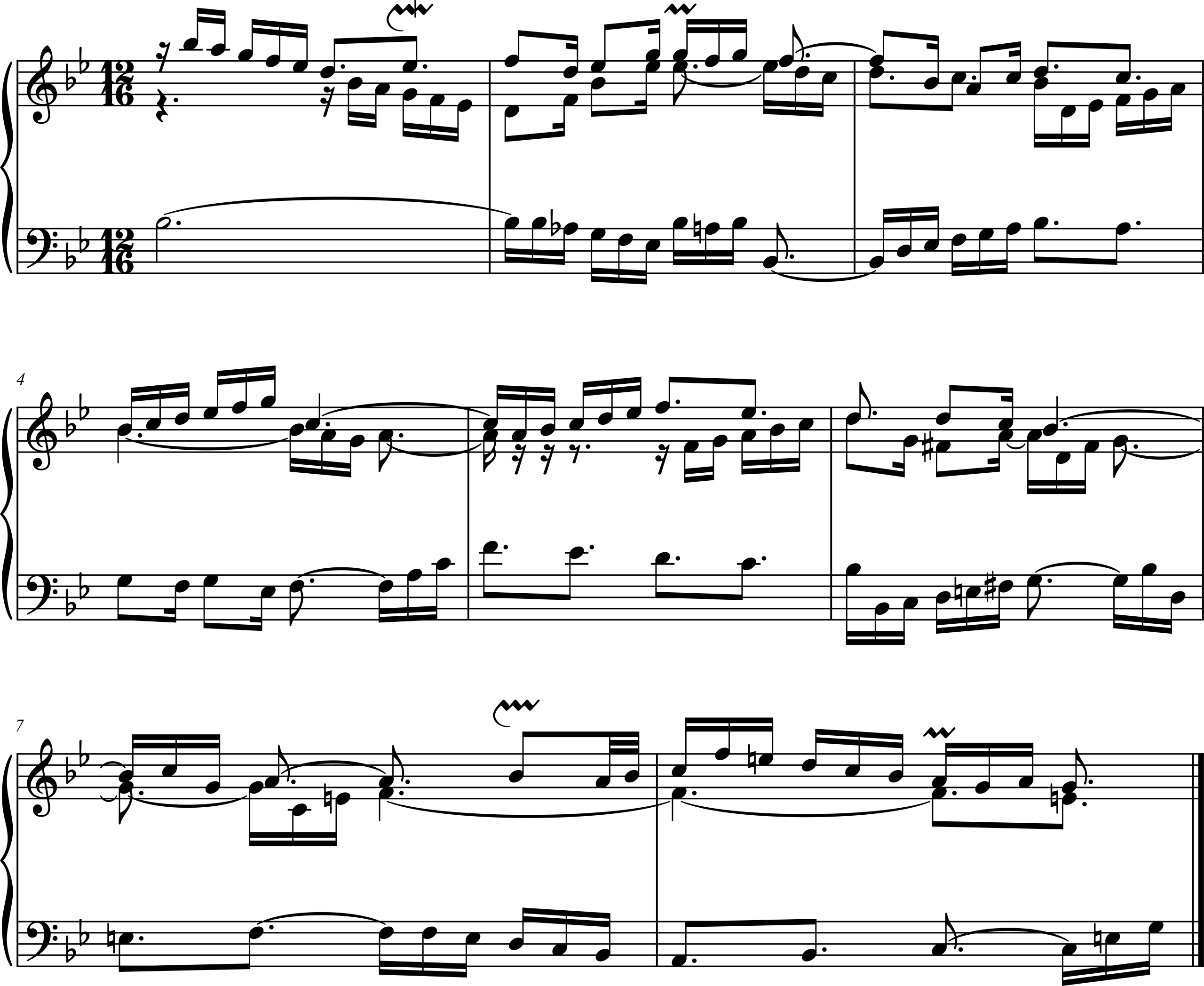B. Compound Meter: 6/16, 9/16, and 12/16
6/16, 9/16, and 12/16 time signatures can be found in a range of contexts and tempos. They should be felt in two, three, and four, respectively, just like their 6/8, 9/8, and 12/8 counterparts.
Most of the exercises below are multi-part and are therefore ideal for group practice. See the performance notes below.
6/16
Exercises 6B-1 and 6B-2 are both expositions of 3-part fugues and ideal for trio performance.
Exercise 6B-1: Johann Sebastian Bach, The Well-Tempered Clavier, Book 2, Fugue Number 11 in F Major
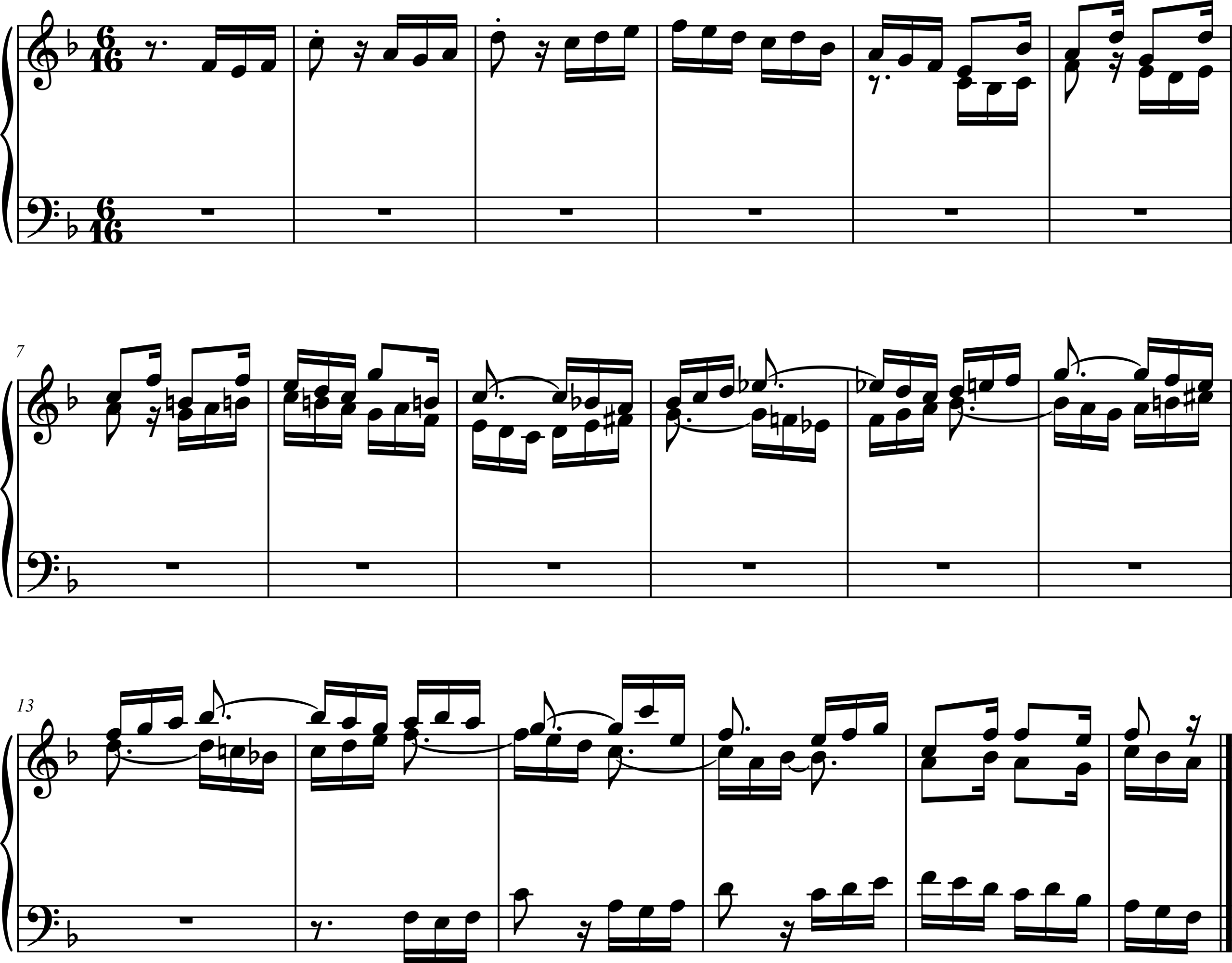
Exercise 6B-2: Alexei Stanchinsky, Piano Sonata Number 2, Movement 1, Fuga
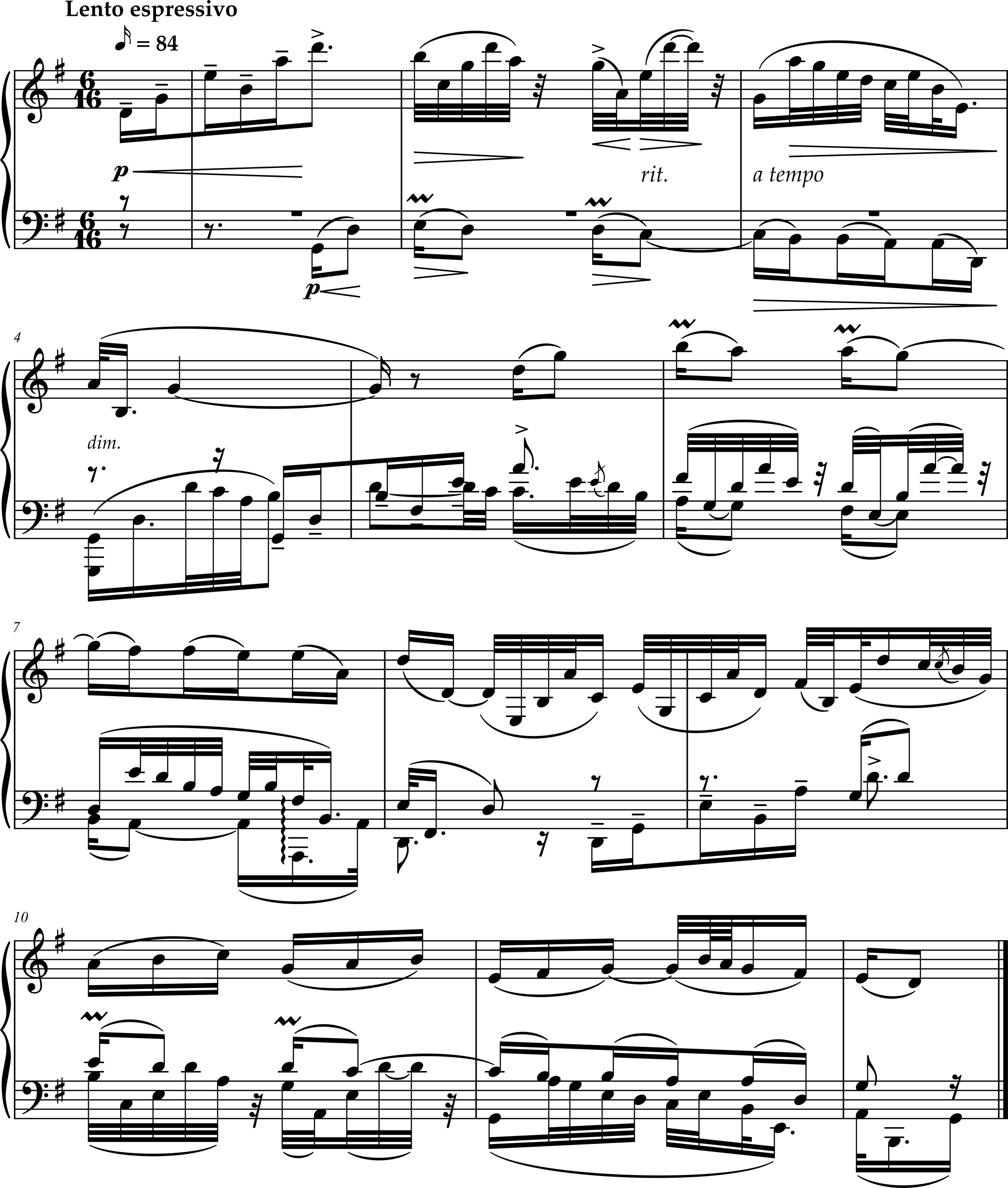
9/16
Exercises 6B-3 and 6B-6 are this section’s single-line exercises.
Exercise 6B-5, while possible to break into multiple parts, is also best thought of as if a single-line exercise, performing the composite rhythm across all parts (also called the resultant rhythm).
Exercise 6B-4 can be performed as either a two-part exercise (right-hand melody and bass line) or a three-part exercise (right-hand melody, right-hand inner voice, and bass line).
Exercise 6B-3: Ludwig van Beethoven, Piano Sonata Number 32, Op. 111, Movement 2, Arietta

Exercise 6B-4: Ludwig van Beethoven, Piano Sonata Number 32, Op. 111, Movement 2, Arietta
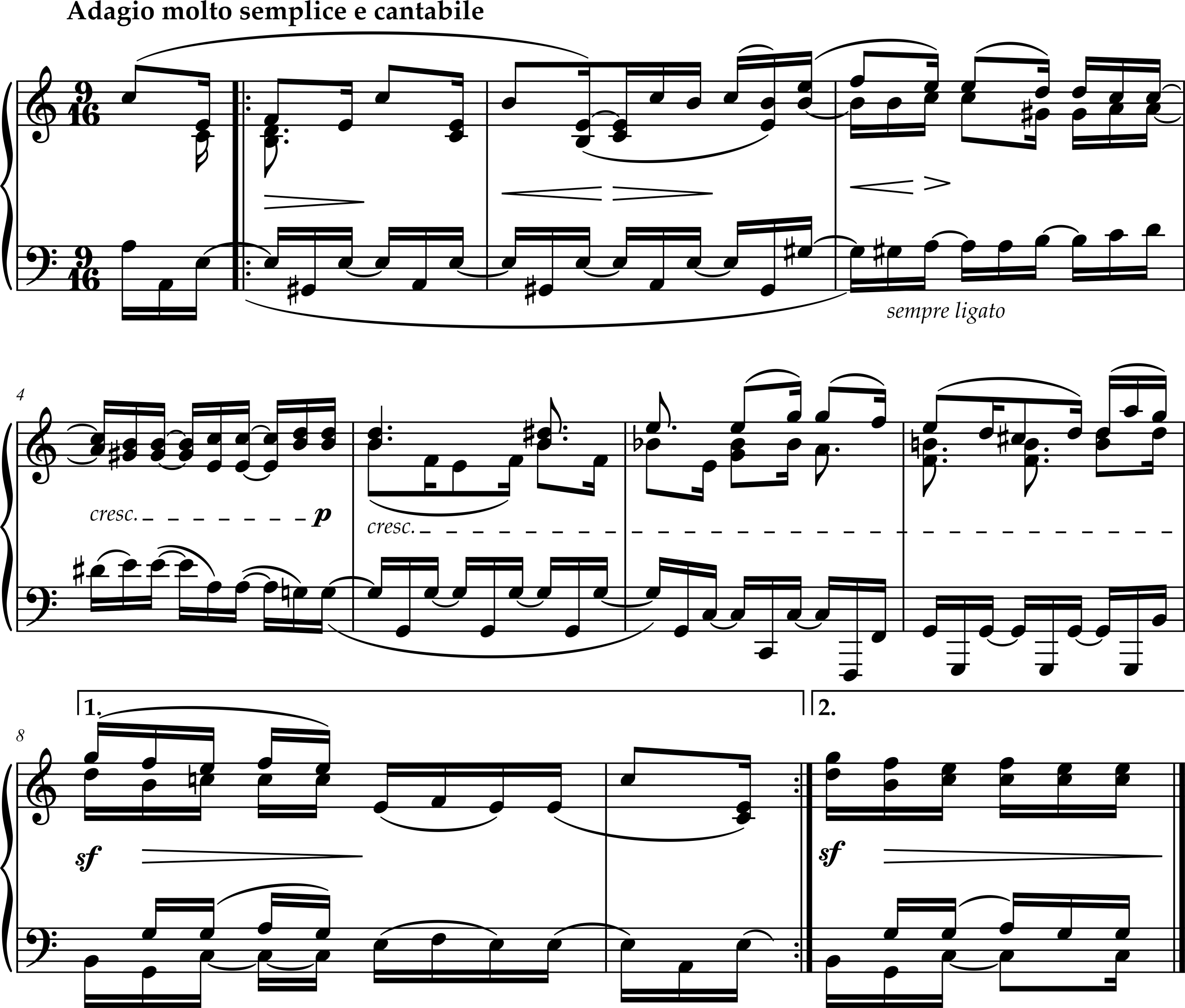
Exercise 6B-5: Alexander Scriabin, Piano Sonata Number 10, Op. 70, Movement 1
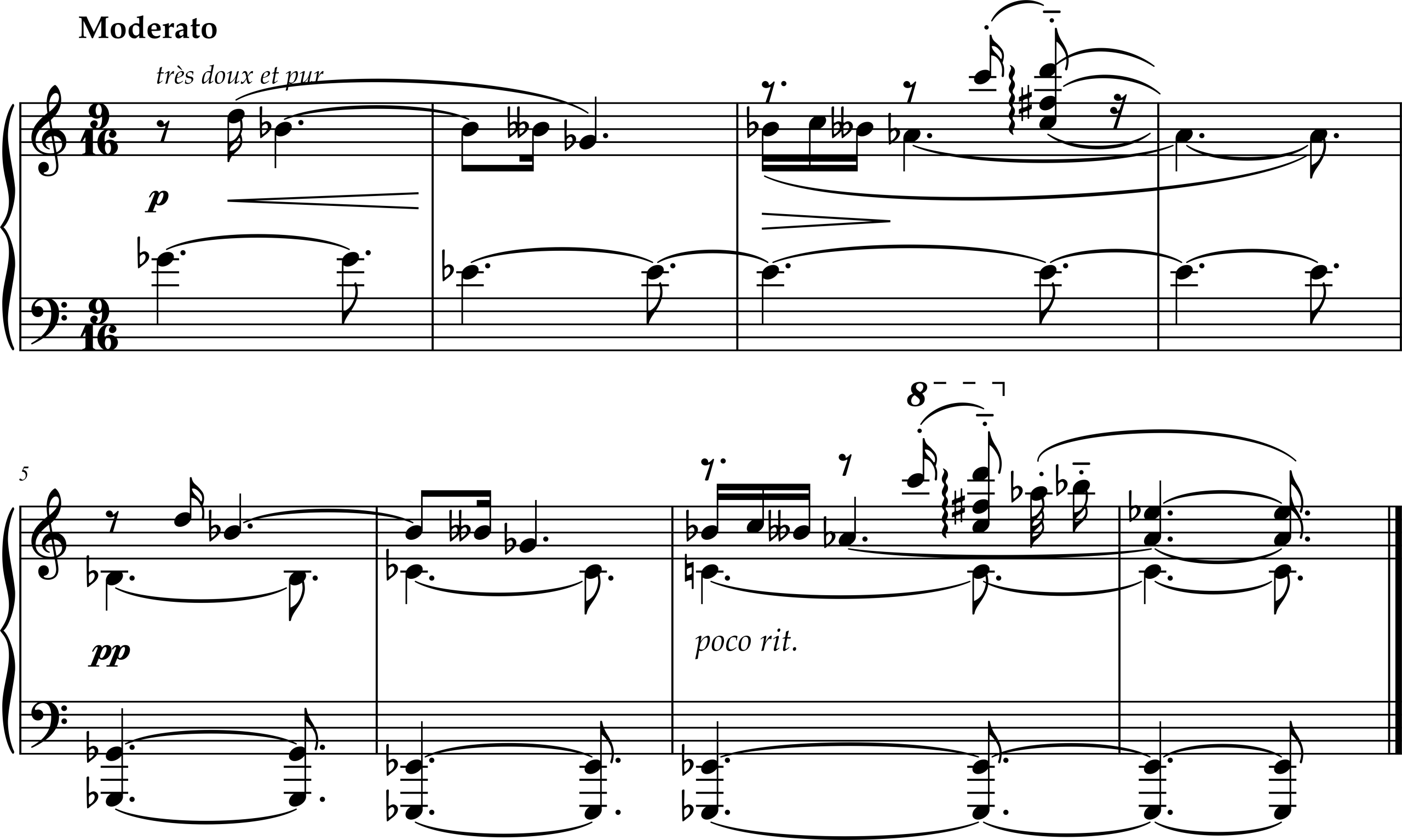
Exercise 6B-6: Alexander Scriabin, Piano Sonata Number 10, Op. 70, Movement 1
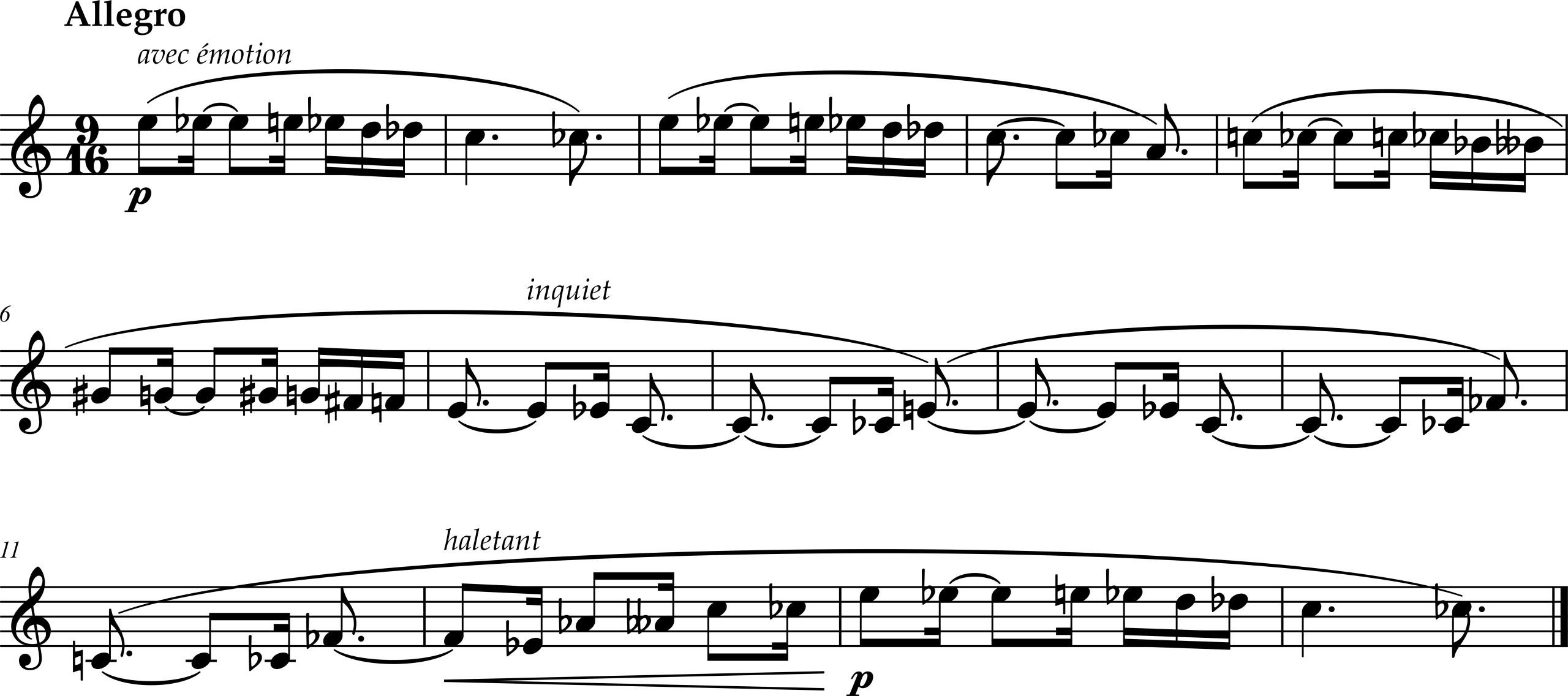
12/16
The exercises below consist of two-part (6B-7 and 6B-8) and three-part (6B-9) imitative textures and are effective for duet and trio performance, respectively. Exercise 6B-8 is also simple enough to perform individually as syncopation practice.
Exercise 6B-7: Johann Sebastian Bach, Goldberg Variations, Variation Number 11
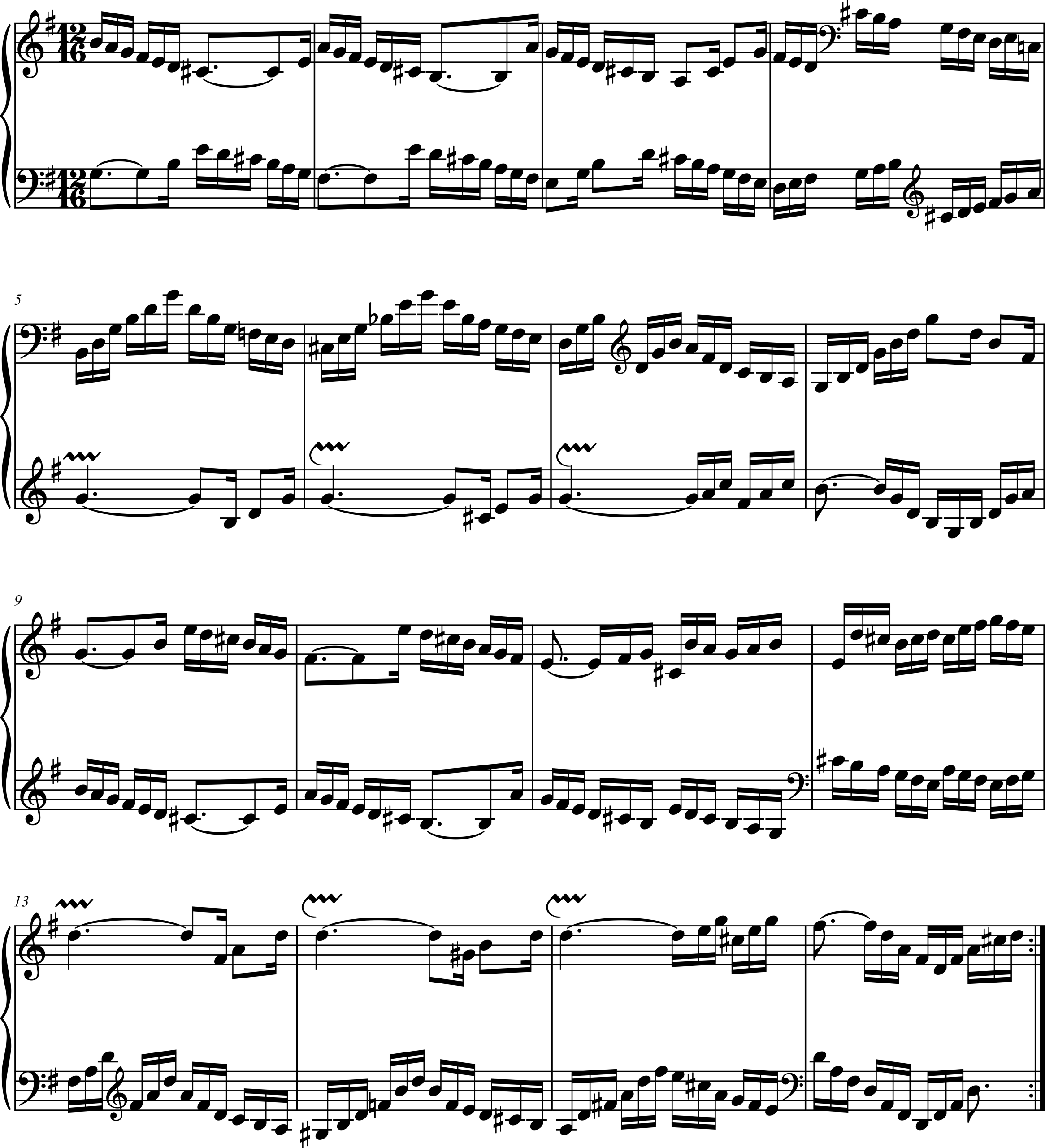
Exercise 6B-8: Johann Sebastian Bach, The Well-Tempered Clavier, Book 1, Prelude Number 13 in F# Major
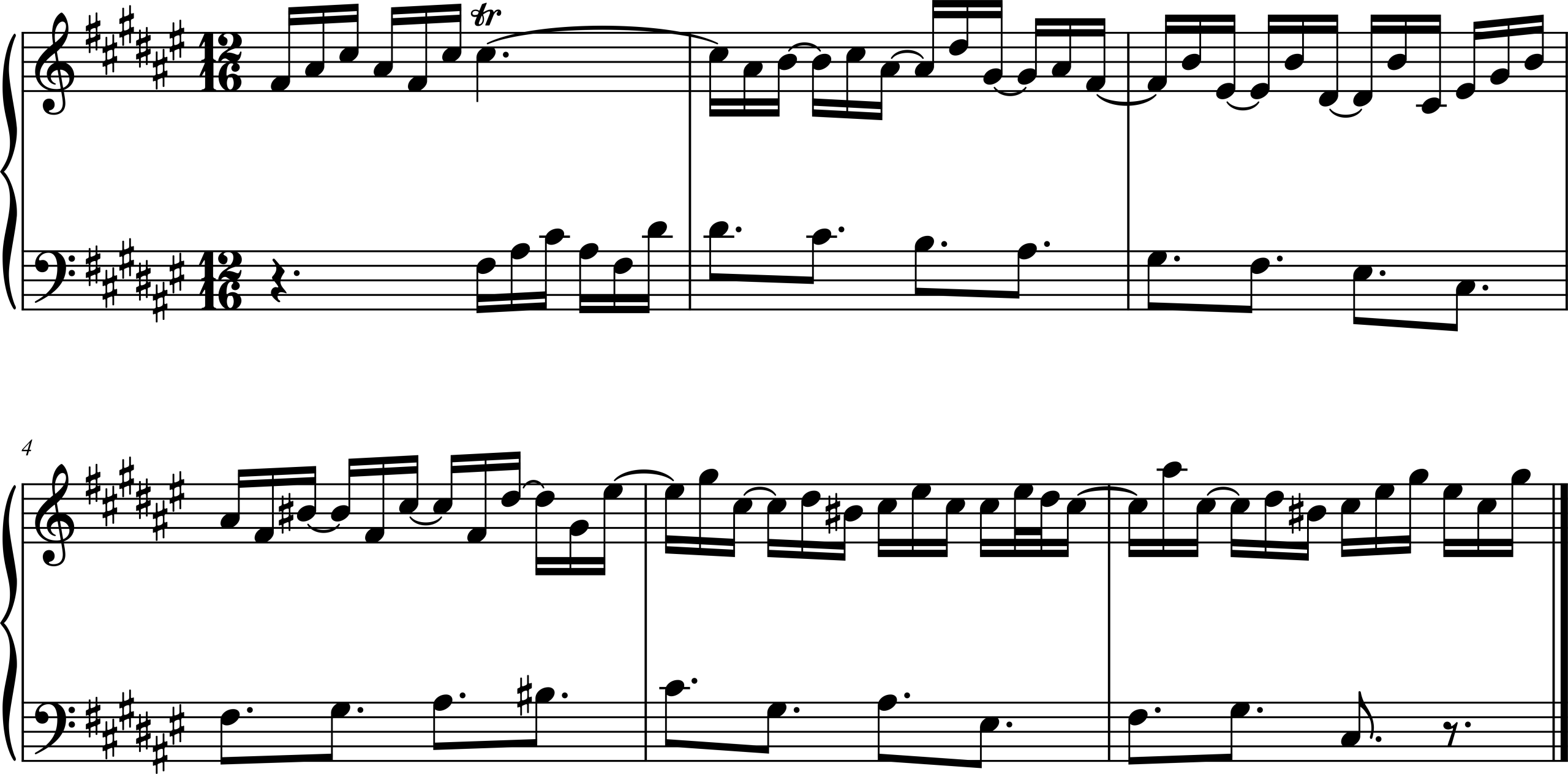
Exercise 6B-9: Johann Sebastian Bach, The Well-Tempered Clavier, Book 2, Prelude Number 21 in Bb Major
